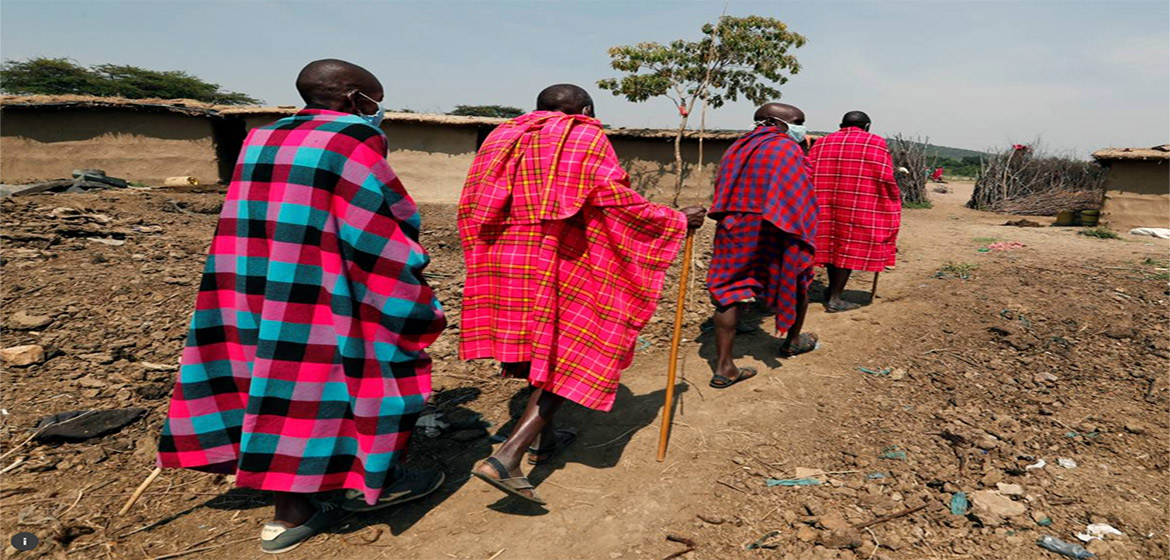Indigenous communities know how to protect land and nature and ensuring their land rights is a big step toward net-zero emissions
by | Rights and Resources Initiative
Stanley Kimaren ole Riamit is an indigenous leader from the Pastoralists Maasai Community in Kenya founder-director of Indigenous Livelihoods Enhancement Partners (ILEPA) and serves on the board of the .
As countries and companies make net-zero promises, nature’s role in absorbing carbon and offsetting emissions has received increasing attention.
Investing in nature - or so called nature-based solutions - is seen by players from , to as the key to removing carbon and achieving net-zero.
Carbon removal, or negative emissions, is now net-zero pledges.
For my community, the Maasai pastoralists of Kenya, nature-based solutions are nothing new: ensuring that nature remains intact has always been a central part of how we operate.
Our traditional nature-based solutions have long been recognized as one of the most effective means of restoring ecosystem health and reversing degradation in drylands. In maintaining healthy ecosystems, we have ensured that forests can hold and capture more carbon, helping keep emissions down.
The Maasai are one of Kenya’s many pastoral groups, which overall make up 25% of Kenya's population. But like most indigenous peoples of the world, we have been pushed out of more productive territories to arid and semi-arid lands.
At least three-quarters of land in Kenya is classified as arid and semi-arid lands, including savanna and grassland ecosystems traditionally used for pastoral purposes. These environments are challenging and continuously evolving.
Despite these challenges, Maasai pastoralists have learned to thrive in difficult environments. This is because we have managed— despite enormous pressures to conform to Western ideologies of “civilization”—to maintain our identity and to hold onto our cultural practices, including our knowledge of conservation and natural resources management.
Our deep knowledge as herders of all the grasses on the range allows us to distinguish between plants that fatten livestock versus those that are good for increasing milk. During dry years, this type of knowledge is crucial as it allows us to make decisions about where is best to graze when resources are limited.
We as Maasai have also developed a system of livestock management that ensures we never deplete livestock forage. To do this, we keep multispecies herdes who feed on different ecological niches, we use rotation grazing—a tactic where we move livestock to different sections of pastures to permit plants to regrow—and set aside land for grazing reserves during critical periods to make sure young or lactating animals are taken care of.
The result: the land we live on remains robustly resilient even during difficult dry periods, with nature continuing to be able to absorb carbon dioxide.
Yet despite the proven ecological benefits of our mobile pastoralism strategies, policy makers for years have argued that our approach is irrational, environmentally destructive, and contributes little to the domestic economy. This, however, is not true.
First, the majority of livestock products sold and consumed in the Horn of Africa come from drylands. Government estimates have found that arid and semi-arid lands are home to 70% of the national livestock herd, and this livestock production makes up 30% of Kenya’s total national agricultural production.
Our mobile pastoralism strategies—which keep livestock healthy and alive—contribute significantly to the economy.
Secondly, our pastoral techniques help n vital dryland ecosystems. This is not only good for ensuring wildlife conservation, soil fertility, water and air quality: it also ensures that these ecosystems can continue to sequester carbon.
There is showing that our system of communal land tenure is the most viable tenure system for areas facing climatic variability. Yet, our land continues to be annexed for conservation, commercial agriculture and tourism.
This is a challenge that indigenous peoples around the world face. Although many are effectively protecting and conserving nature that sequesters carbon, they continue to face threats over their land.
According to a by the Rights and Resources Initiative, indigenous peoples and local communities have grounded claims to over half of the Earth’s terrestrial area, yet they of it.
If companies and countries want their nature-based tactics for controlling carbon emissions to be effective, they must secure the right of indigenous peoples to their lands first.
Securing our land rights represents the world’s greatest to enhance ecosystem resilience and in turn, ensure that nature-based solutions actually mitigate climate change.
Source:



